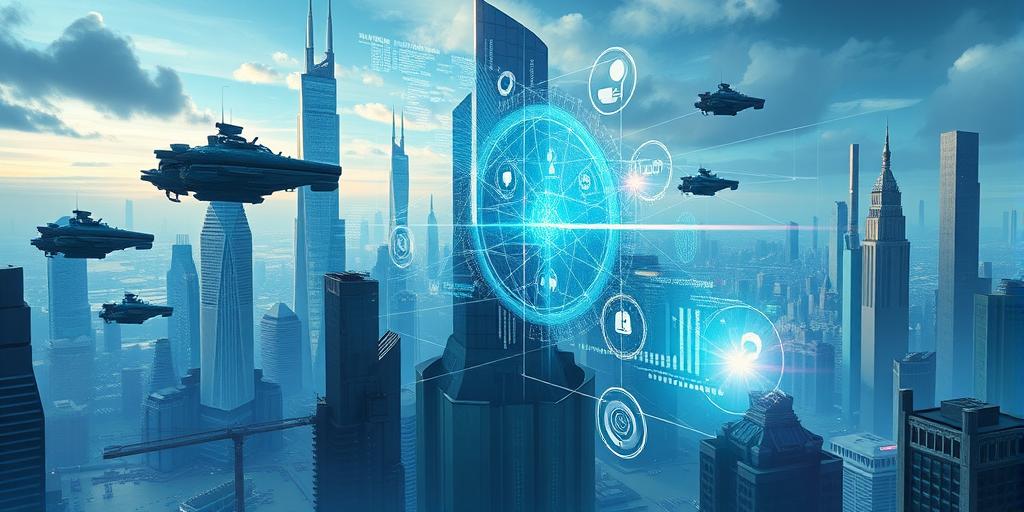Have you ever wondered how your smartphone understands your voice commands or how Netflix recommends your next binge-worthy show? The answer, in many cases, lies within the fascinating world of artificial intelligence (AI). It’s no longer science fiction; AI is rapidly changing our lives, from the mundane to the extraordinary. But what exactly is artificial intelligence, and how does this seemingly magical technology actually work? Let’s dive in and demystify this powerful force shaping our future.
Understanding the Fundamentals of AI
Artificial intelligence, at its core, is the simulation of human intelligence processes by machines, especially computer systems. These processes include learning (acquiring information and rules for using the information), reasoning (using rules to reach approximate or definite conclusions), and self-correction. This is often achieved through algorithms – step-by-step instructions designed to process vast amounts of data, identify patterns, and make predictions. Think of it as teaching a computer to think, learn, and problem-solve, much like a human brain – but with exponentially more processing power.
Machine Learning: The Engine of AI
One of the most crucial aspects of AI is machine learning (ML). Instead of relying on explicit programming, ML algorithms learn from data. They identify patterns, make predictions, and improve their accuracy over time based on the information they’re fed. Imagine teaching a dog a trick; you wouldn’t write a detailed instruction manual; you’d show them, reward good behavior, and correct mistakes. ML works similarly, albeit with complex mathematical models and algorithms. There are many types of machine learning, including supervised learning (learning from labeled data), unsupervised learning (finding patterns in unlabeled data), and reinforcement learning (learning through trial and error).
Deep Learning: Mimicking the Human Brain
Deep learning takes machine learning a step further by using artificial neural networks with multiple layers (hence “deep”). These networks are inspired by the structure and function of the human brain, allowing them to process incredibly complex data and learn intricate patterns. Deep learning is behind many breakthroughs in AI, such as image recognition, natural language processing, and self-driving cars. Think of it as creating an artificial brain with many interconnected neurons that work together to analyze and understand information. It requires vast amounts of computational power and data.
Applications of Artificial Intelligence
The applications of AI are practically limitless and continue to expand at an astonishing rate. From the mundane tasks that make our lives easier to revolutionary advancements in healthcare and science, AI is transforming every industry. Examples of AI in action include:
AI in Everyday Life
We interact with AI more than we realize. Personalized recommendations on streaming services, virtual assistants like Siri and Alexa, spam filters in our email, and even predictive text on our smartphones are all powered by AI. These everyday applications demonstrate how AI is seamlessly integrated into modern life. The convenience these technologies offer often goes unnoticed, but they rely on complex algorithms running in the background.
AI Revolutionizing Industries
Beyond everyday convenience, AI is driving major innovation across various sectors. In healthcare, AI is assisting in diagnostics, drug discovery, and personalized medicine. In finance, AI is used for fraud detection, risk management, and algorithmic trading. In manufacturing, AI is optimizing production lines and predicting equipment failures. The possibilities are endless, with new applications emerging every day.
The Future of AI: What Lies Ahead?
The future of AI is both exciting and uncertain. As AI technologies continue to advance, we can expect even more sophisticated applications, from personalized education to sustainable energy solutions. However, ethical considerations and potential risks, such as job displacement and algorithmic bias, must be carefully addressed. The responsible development and implementation of AI are critical to ensure a positive impact on humanity. A constant focus on ethical frameworks is key to reaping the numerous benefits of this cutting-edge technology.
Conclusion: Embracing the Age of AI
Artificial intelligence is no longer a futuristic concept; it’s a present-day reality shaping our world in profound ways. By understanding the fundamentals of AI, its applications, and its potential, we can harness its power for good and navigate its challenges responsibly. From everyday conveniences to revolutionary advancements, AI is poised to transform our future. Are you ready to embrace the age of AI? Learn more by exploring the links below and stay updated with the latest AI innovations!




